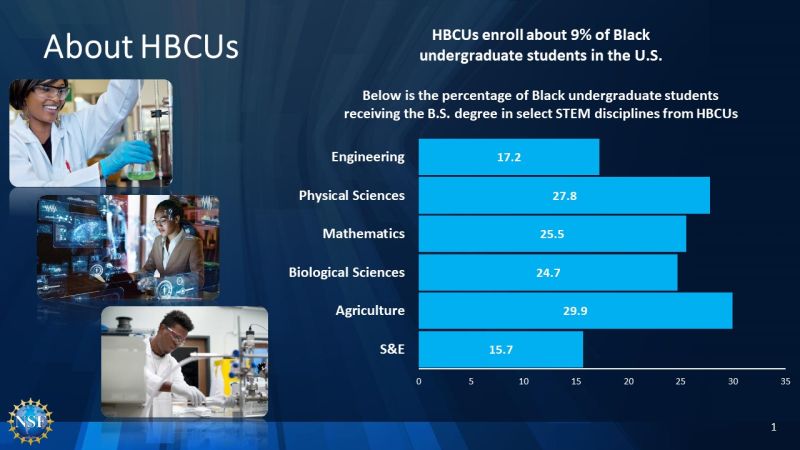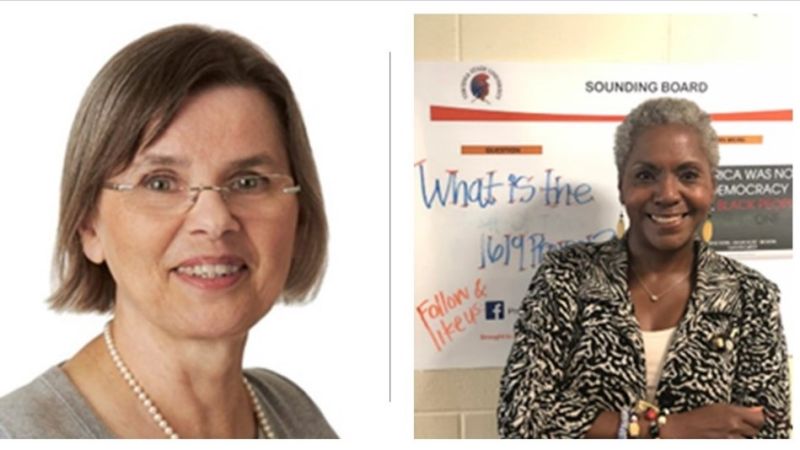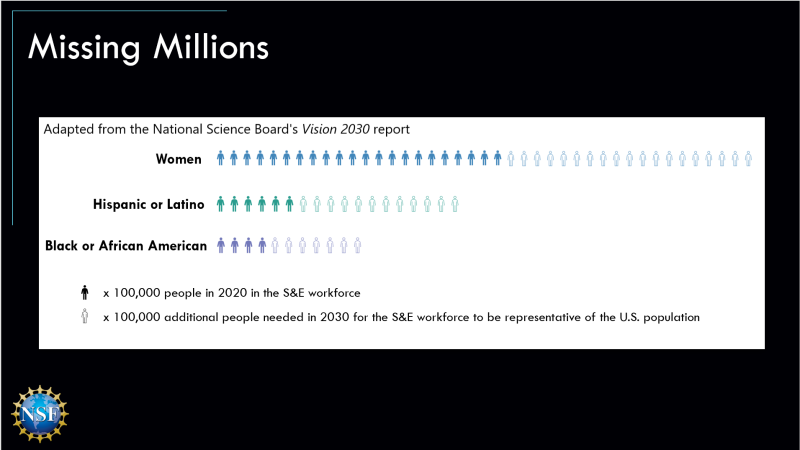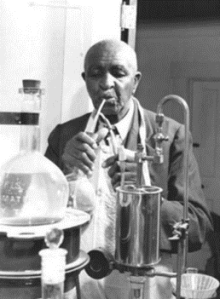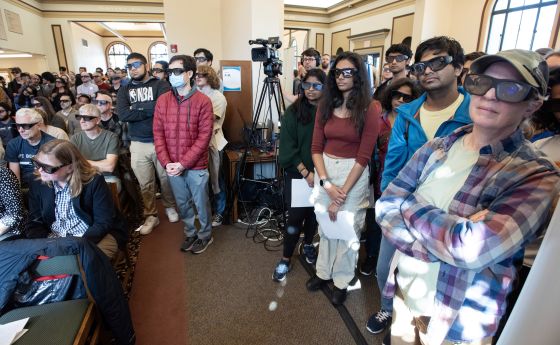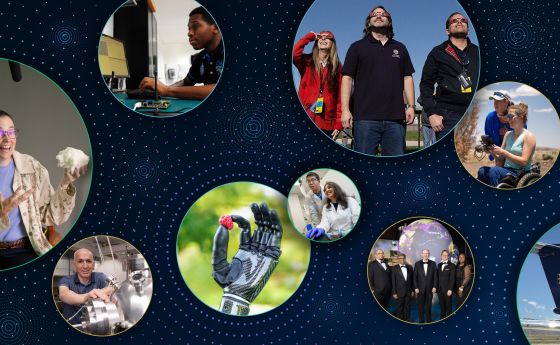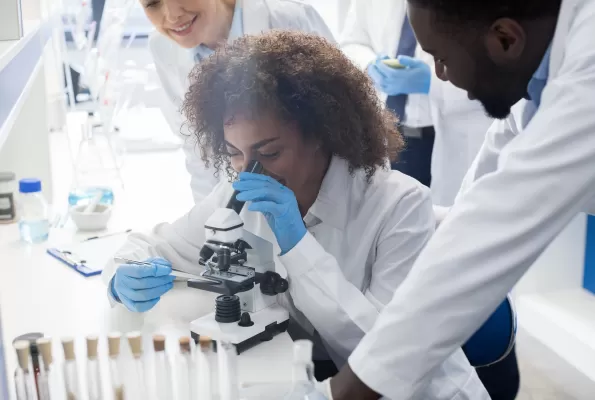
The science behind HBCU success
How NSF and HBCUs are supporting research that explores HBCU success rates across all STEM fields as a model for broadening participation across higher education
Historically Black colleges and universities have proven to be extremely effective in graduating Black students, particularly in STEM. While HBCUs enroll about 9% of Black undergraduates in the U.S., they graduate a significantly higher percentage in critical fields such as engineering, mathematics and biological sciences. HBCUs represent seven of the top eight institutions that graduate the highest number of Black undergraduate students who go on to earn S&E doctorates.
Despite the positive statistics and many success stories, not nearly enough scholarships exist surrounding the best practices at HBCUs or how to replicate them. The U.S. National Science Foundation established the HBCU STEM Undergraduate Success Research Center (STEM-US) to examine these strategies and how they might broadly inform higher education overall. Led by researchers at Morehouse College, Spelman College and Virginia State University, STEM-US will study and model the broadening participation success of 50 out of the nation’s 100 HBCUs.
To learn more about this program, the HBCU way of life and the challenges HBCU researchers face, we talked with NSF Program Officer Claudia Rankins, who manages NSF's HBCU program, and Cheryl Talley, a professor of psychology and neuroscience at Virginia State University and one of NSF's HBCU program's lead researchers.
The second curriculum
What is it about the support systems at HBCUs that make them so successful in graduating STEM students of color?
Claudia: It’s all of the intangibles that happen outside the coursework. The scholar Chandra Guinn calls it "the second curriculum." Guinn defines it as "an affirmation of the scholarship of black people, which gives the students confidence, makes them courageous and gives them the expectation that they belong." An environment is created where the philosophy is to empower students, not weed them out.
Cheryl: Exactly. At VSU, the university mission is everywhere. People know it and recite it. There is a deep faith in the idea that it will take all of us as a village to ensure our students succeed, and that this moves our whole people forward.
Claudia: And it starts with the leadership and goes all the way to the worker in the cafeteria and the people who come and clean your office. Everybody feels a part of that mission.
Cheryl: Yes, and it is working. But we are so overwhelmed doing the second curriculum that it is incredibly hard to do the science as well.
The reality of research at HBCUs
What are some of the challenges HBCU researchers are experiencing?
Claudia: HBCUs are, for the most part, underfunded and under-resourced. This translates into faculty having large teaching loads and doing a lot more mentoring at the expense of being scholars. I taught at an HBCU for 22 years and did everything but publish. That is not an excuse, that is a real thing.
Cheryl: Yes, it most definitely is.
Claudia: Faculty who come from smaller institutions that happen to also be minority-serving universities don’t have the same kind of assistance when they write proposals.
Cheryl: And even when a grant is awarded, the funding difference impacts how that grant is managed. Everything from the reporting and documentation necessary to even the time and effort required to get basic supplies. At the predominantly white institutions (PWI) where I came from, someone else did that. All I did was provide a list. Once I saw what it took to do research at an HBCU, I had to revise my entire approach.
Claudia: It’s important to note that this is the first year HBCU land-grant institutions received federal funding comparable to white land-grant institutions. So even among these universities, which are traditionally well funded, the disparity is there and has been there traditionally. Despite the lack of resources, however, HBCUs graduate Black undergraduate students at the same rate as non-HBCUs graduate white students, and they graduate them at twice the rate other institutions graduate Black students.
Cheryl: Yes, and more of their graduates go on to get Ph.Ds.
But I’m not good at science
What inspired you to study the factors leading to academic achievement in African American communities?
Cheryl: I taught for 15 years at a PWI, where I brought my love of science and inquiry into the classroom. When I came to Virginia State University eight years ago, I quickly realized that my students didn’t share my enthusiasm for science. In fact, they were science averse.
So, I did what I was trained to do. I dove into the literature and taught myself about teaching and learning in African American populations. I soon discovered it had nothing to do with gaps or students not being smart enough or trained well enough. It was an attitudinal barrier that kept getting in the way. "I hate science," they’d say, or "they told me I’m not good at science." It was one story after another.
The more I researched education, the more I saw the real issue. These students had never truly experienced science, and it’s easy to hate something you don’t understand. So, I went on a mission to excite them about the thing I loved.
Studying the barriers and scaling the results
What were your first outcomes and how did you learn to scale them?
Cheryl: My research team and I started out working with VSU seniors, and we found that they were successful academically once their beliefs, attitude or behaviors toward STEM fields changed. I wanted to see if we could apply these same strategies to freshman, and that became my first NSF grant. We taught upperclassman to model the right mindset and habits for incoming freshmen and soon, we had students graduating in STEM disciplines in four to five years. Now, we’re training VSU students to mentor seniors in high school.
I joined the STEM-US center to develop the scholarship -- rigorous, science-based analysis that explained why certain practices were successful. This is what was missing and what we know is necessary to continue scaling these strategies. When I started, I had to dig through the trenches to find theory that applied the scientific method and was appropriate for this community. There are so many success stories, but not enough scholarship behind the reality.
Claudia: What I appreciate about NSF is that we give PIs, like Cheryl, an opportunity to propose a realm of study that they feel is most important to them and their communities. We don’t try to dictate that. As a result, we get people who develop these great proposals that link their life’s research to their students and their communities, and that is a powerful thing.
I take this personally
How did your experience as a student or educator influence you and your support for this line of research?
Claudia: My experience at an HBCU had a profound impact on me. I began to pursue a Ph.D. in statistics at a PWI in the late 1970s. I had all my qualifiers and exams and no one on the all-male faculty was willing to be my dissertation adviser. There was no support, and I was forced to quit.
Years later, I started a Ph.D. in physics at an HBCU, and every last person there was supportive of me. While I was earning my doctorate, I was teaching five classes every semester. That experience made me more aware and understanding of what students go through, particularly those who have the odds stacked against them.
I am a huge advocate of HBCUs today, because I realized that my family and I really owe something -- not just to my alma matter, but to HBCUs in general. When the opportunity came to lead the HBCU Undergraduate Program at NSF, which funds projects and centers like STEM-US, I saw it as a way to give back.
Cheryl: I didn’t attend an HBCU, but I identified very much with the Black students at the PWI where I taught previously. I remember advising a nursing student, who felt isolated when nobody wanted her to be in their cohort and it seemed she had even fewer allies among the faculty. That’s just one example.
The loneliness, the sense of alienation and the resilience that Black students feel at PWIs is not unlike what the faculty feel too. When it came time for promotion and tenure and serving on committees etc., I continually had to prove myself. It wasn’t enough that I was qualified. I see that same stress and pressure in the students. You get worn down by all of it. I’m hopeful this research will provide a resource for Black students and faculty at every institution.
A new kind of thinking
A goal of STEM-US is to bring HBCU best practices to mainstream institutions. What could full inclusion in STEM education mean for science and the U.S.?
Claudia: It would enable science to be better in ways we cannot even imagine because we don’t understand what is important and valuable to the people we have been excluding. If we leave out 30-40% of the population, we don’t know what’s important to those communities and what is ultimately important to all of us.
Cheryl: We are also missing out on a tremendous amount of knowledge. One of my heroes is George Washington Carver, who introduced the method of crop rotation to the world and through it was able to save the economy of an entire region.
Claudia: Yes, and by broadening the whole map to bring in HBCUs, Native American perspectives and other world views, we can incorporate new approaches that could help to address more complex challenges.
Cheryl: It’s no question that our post-COVID world is going to require a new kind of thinking -- one we haven’t applied since the U.S. government significantly increased its commitment to support STEM education and research in the wake of the Soviet Union’s launch of Sputnik in 1957. We’re going to have to include all kinds of perspectives because so much will have changed in just education alone.
I see this as our call -- our time in history to create a new way of relating to each other and working together to solve our challenges. Isn’t that what science is intended for?
________________________________________________________________________________________________________________
Additional resources to support HBCU scholars:
- NSF’s Faculty Early Career Development (CAREER) program is one of many NSF funding opportunities for new investigators. Here are four tips for applying to NSF’s Career program.
- NSF INCLUDES National Network
- STEM Central
- ADVANCE Resource and Coordination (ARC) Network
- Women, Minorities, and Persons with Disabilities in Science and Engineering
- Emerging Researchers National Conference in STEM
- Community for Advancing Discovery Research in Education (CADRE)
- TERC



